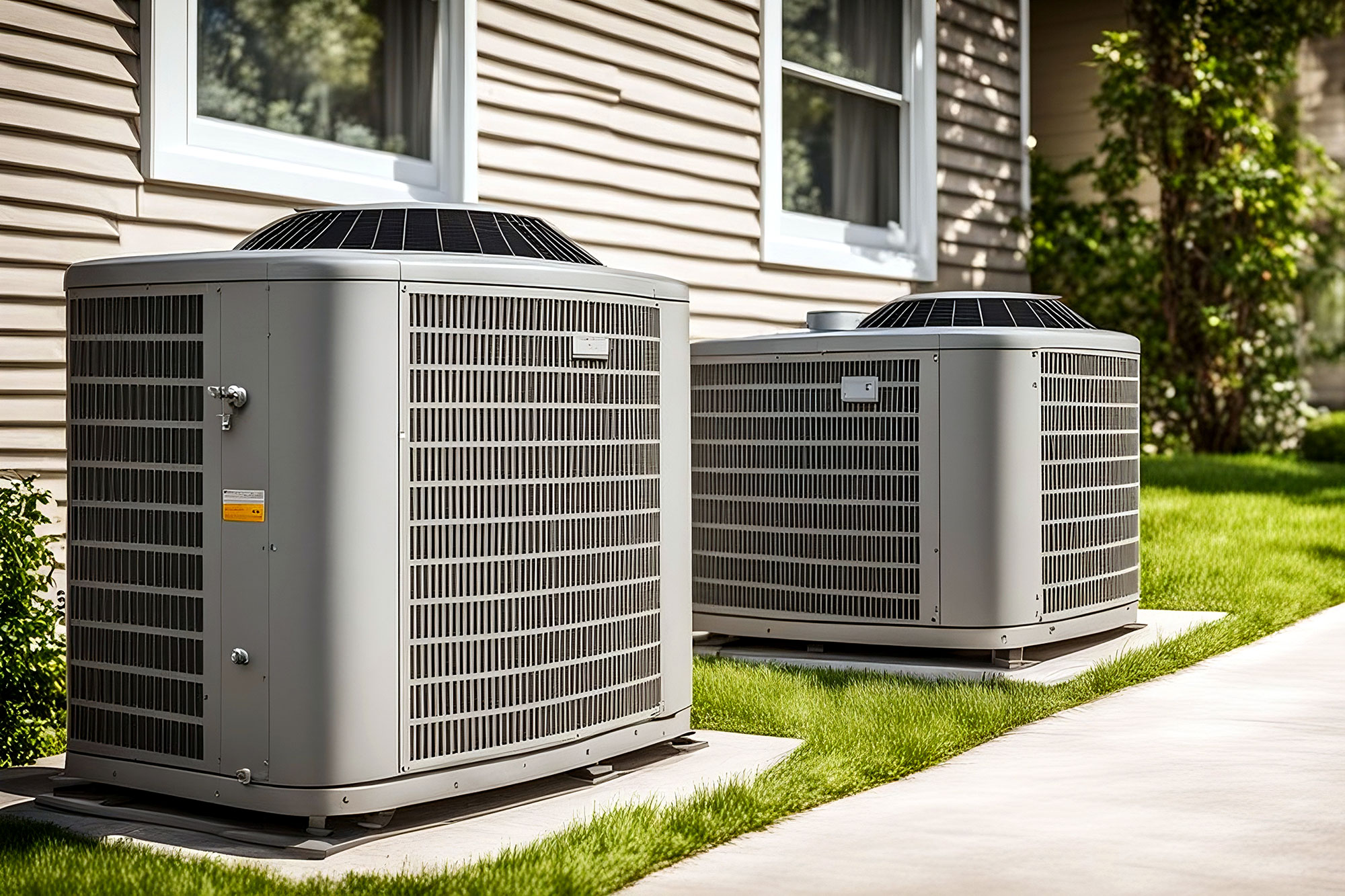
If you live in one of The Woodlands’ beautiful larger homes—whether that’s in Sterling Ridge, Grogan’s Mill, or any of the other wonderful neighborhoods around here—you already know your house is special. But here’s something you might not think about until there’s a problem: your HVAC needs are completely different from a standard-sized home, and trying to cool or heat your space the same way just doesn’t cut it.
We’re talking about homes that might be 3,500 square feet, 4,500 square feet, or even larger. Multiple stories, multiple living areas, maybe a game room upstairs, a home office, and a master suite that’s basically its own apartment. These homes are amazing to live in, but they present some unique challenges when it comes to keeping everyone comfortable year-round.
Let’s talk about what you really need to know to keep your large Woodlands home comfortable without breaking the bank on energy bills.
Size Matters (But Bigger Isn't Always Better)
Here’s where a lot of homeowners get steered wrong. You’d think a bigger home automatically means you need the biggest AC unit available, right? Actually, that’s one of the worst mistakes you can make.
When an HVAC system is too large for your space, it cycles on and off too frequently. That might sound like it’s working hard, but what’s really happening is it’s cooling the air too quickly without running long enough to remove humidity. In The Woodlands, where humidity is practically a way of life from May through September, you end up with a house that feels clammy and uncomfortable even when the temperature is technically right. Plus, all that short cycling wears out your equipment faster and drives up your energy bills.
On the flip side, a system that’s too small will run constantly, never quite getting your home to the temperature you want, especially on those brutal July afternoons when it’s 98 degrees outside and feels like 110 with the heat index.
The sweet spot? A proper load calculation that takes into account your home’s square footage, ceiling height, insulation, window placement, how much sun hits your house, and even which direction it faces. No guessing, no “standard” recommendations—just math and experience coming together to figure out exactly what your home needs.
The Multiple Unit Question
Walk into most large homes in The Woodlands and you’ll find they have two, three, or sometimes even four separate HVAC units. There’s a good reason for that. Trying to push cooled or heated air from a single unit through a massive home just doesn’t work well, especially when you’re dealing with multiple stories.
Think about it this way: heat rises. So your upstairs is naturally going to be warmer than your downstairs, sometimes by a significant margin. If you only have one unit trying to handle everything, you’re either freezing the people downstairs or leaving the folks upstairs sweating. Not ideal.
Multiple units give you flexibility. You can have one unit dedicated to the upstairs bedrooms, another handling the main living areas, and maybe a third for a game room or separate wing. Each one can be controlled independently, which means your guest rooms don’t have to be freezing when nobody’s using them, and you can keep your master bedroom exactly how you like it without affecting the rest of the house.
The trade-off? You’ve got multiple systems to maintain, multiple filters to change, and if something goes wrong, you need to figure out which unit is having the issue. But for most large homes, the comfort benefits far outweigh these minor inconveniences.

Zoning Systems: The Game Changer
Now, if you really want to get smart about your HVAC setup, let’s talk about zoning systems. This is where things get interesting.
A zoned system uses dampers in your ductwork and multiple thermostats throughout your home to control airflow to different areas independently. So you might have your home divided into zones like this:
- Zone 1: Master bedroom suite
- Zone 2: Upstairs bedrooms and hall
- Zone 3: Main floor living areas
- Zone 4: Home office or bonus room
Each zone gets its own thermostat, and the system automatically adjusts to deliver more or less conditioned air where it’s needed. If your kids’ rooms upstairs are getting too much sun in the afternoon and heating up, you can crank up the cooling there without making the shaded living room downstairs feel like an icebox.
This is especially brilliant for the way most people actually live in larger homes. During the day, you might primarily be using the kitchen and living areas, so why waste energy cooling bedrooms that nobody’s in? At night, you want the bedrooms comfortable but don’t need as much cooling in the living spaces. Zoning lets you customize your comfort and save money at the same time.
Ductwork: The Hidden Problem
Here’s something most homeowners never think about until there’s a problem: your ductwork might be sabotaging your comfort and your wallet. In larger homes, you’ve got a lot of ductwork snaking through your attic, walls, and crawl spaces. If that ductwork wasn’t installed properly, has come loose over time, or has developed leaks, you could be losing 20-30% of your cooled or heated air before it even reaches the rooms you’re trying to condition.
That’s like leaving a window open while your AC is running, except you can’t see it happening. Your system works harder, your energy bills go up, and some rooms in your house just never seem quite comfortable no matter what you do with the thermostat.
A good HVAC company should be willing to inspect your ductwork as part of evaluating your system. They should be looking for leaks, checking that connections are sealed properly, making sure ducts are properly insulated in your attic (because attics in Texas get hot enough to bake cookies), and verifying that the duct size is appropriate for the amount of air that needs to flow through them.
Indoor Air Quality in Big Spaces
Larger homes mean more indoor air to worry about. With more square footage, more occupants, and often more sources of indoor air pollution (cooking, pets, off-gassing from furniture and carpets), you need to think seriously about indoor air quality.
The humidity issue is particularly important in The Woodlands. Our climate can leave your home feeling muggy even when the AC is running. For larger homes, a whole-home dehumidifier integrated with your HVAC system can make a massive difference in comfort. You’ll feel cooler at higher temperatures, which means you can set your thermostat a bit higher and save on energy costs while actually feeling more comfortable.
High-quality air filtration is another consideration. Standard filters do an okay job, but if anyone in your family has allergies or asthma, or if you just want cleaner air in general, upgrading to HEPA filtration or adding an air purifier to your HVAC system is worth considering. With more air circulating through a larger home, improving that air quality benefits everyone.
Energy Efficiency Isn't Optional
Let’s talk money. Running HVAC for a large home in The Woodlands isn’t cheap, especially during summer when your systems are working overtime. The electric bills can be eye-watering if you’re not careful.
This is where investing in high-efficiency equipment pays for itself over time. Modern HVAC systems with high SEER ratings (Seasonal Energy Efficiency Ratio) use significantly less energy than older units. We’re talking about potential savings of 20-40% on your cooling costs. For a large home, that could easily be hundreds of dollars per month during peak summer.
Variable-speed systems are especially good for larger homes. Instead of just being “on” or “off,” they can run at different speeds depending on how much cooling or heating is needed. When it’s not brutally hot outside, the system runs at a lower speed, using less energy while still keeping you comfortable. When temperatures spike, it ramps up to full power. It’s like the difference between driving at a constant highway speed versus constantly accelerating and slamming on the brakes—one is way more efficient than the other.
Smart thermostats are another no-brainer for large homes. Being able to program different temperatures for different times of day, control your system from your phone, and get alerts when something’s not working right can save you serious money and headaches. Some of the newer models even learn your habits and adjust automatically.
Maintenance Is Non-Negotiable
Here’s the thing about having multiple HVAC systems or a complex zoned system: you can’t afford to skip maintenance. When you’ve got this much equipment keeping your home comfortable, regular tune-ups aren’t just a good idea—they’re essential.
Ideally, you want professional maintenance twice a year—once before summer and once before winter. Yes, even in Texas where “winter” is relative. During these check-ups, technicians should be checking refrigerant levels, cleaning coils, inspecting electrical connections, testing safety controls, checking airflow, and making sure everything’s running efficiently.
For larger homes with multiple systems, a maintenance plan usually makes financial sense. You’re getting multiple systems serviced, and most companies offer plans that include priority service, discounts on repairs, and other perks. When you’ve got a 5,000 square foot home and your AC goes out in July, being able to jump to the front of the line is worth its weight in gold.
Between professional visits, there are things you should be doing yourself. Change your air filters regularly—more often if you have pets or allergies. Keep outdoor units clear of debris, leaves, and plant growth. Make sure your indoor vents aren’t blocked by furniture. These simple things can prevent bigger problems down the road.
When It's Time to Replace
HVAC systems don’t last forever. Even with great maintenance, you’re looking at 15-20 years on average, sometimes less in our brutal Texas climate where systems work hard. For large homes, the decision about when and how to replace your systems gets more complicated.
Do you replace all your units at once or one at a time as they fail? There are arguments for both approaches. Replacing everything at once means you can get matching, efficient systems and potentially better pricing. But it’s also a bigger upfront cost. Replacing units as they fail spreads out the expense but might mean you end up with mismatched equipment.
One thing’s for sure: don’t wait until you have a complete failure in the middle of summer to start thinking about replacement. If your systems are getting older, start planning ahead. Get a professional evaluation of what you’ll need, explore your options, and make decisions when you have time to think clearly—not when you’re desperate and uncomfortable.
Working with the Right Company
For large Woodlands homes, you need an HVAC company that has experience with complex installations and understands the unique challenges of cooling and heating bigger spaces. They should be willing to do a thorough evaluation of your home, not just give you a quick quote based on square footage.
The right company will take time to understand how you use your home, assess your current ductwork and systems, and make recommendations that actually fit your needs and budget. They should be able to explain your options clearly, help you understand the trade-offs between different approaches, and stand behind their work with solid warranties.
The Bottom Line
Keeping a large home in The Woodlands comfortable year-round takes the right combination of properly sized equipment, smart design, regular maintenance, and working with professionals who know what they’re doing. It’s an investment, sure, but when you consider how much time you spend in your home and how miserable it is to be uncomfortable, it’s an investment worth making.
The good news? With the right HVAC solution, your large home can be just as comfortable as a smaller one—maybe even more so, since you have options for customization and zoning that smaller homes don’t. You just need to approach it thoughtfully and work with people who understand that your home isn’t cookie-cutter, and your HVAC solution shouldn’t be either.
Living in a large home in The Woodlands and dealing with HVAC challenges? A proper evaluation of your home’s specific needs is the first step to year-round comfort. Don’t settle for one-size-fits-all solutions when your home deserves better.
